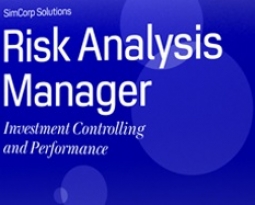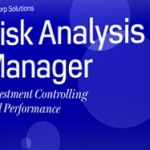How to Evaluate Mutual Fund Performance
 We have talked a lot about mutual fund rates of return. The risk adjusted return, however, is more probative of fund performance than the overall return. We cannot judge a fund based on performance without taking into account the risks it undertook to achieve those returns.
We have talked a lot about mutual fund rates of return. The risk adjusted return, however, is more probative of fund performance than the overall return. We cannot judge a fund based on performance without taking into account the risks it undertook to achieve those returns.
For instance, a stock fund (equity fund) will generate higher returns than a Treasury bond fund. This, however, does not mean that the stock fund is a better investment than a Treasury bond fund: the stock fund undertook far more risk than the Treasury bond fund. Indeed, you could have lost your shirt — and your pants — with the stock fund. In order to have a meaningful comparison between two mutual funds, we must control for risk.
As another example, take two stock funds that generated returns of 10%. One incurred more risk than the other to achieve this 10% return. The less risky fund is the better fund. The more risky fund should have generated a higher (than 10%) return to compensate its investors for the added risk.
Risk adjusted returns allow us to evaluate a fund’s return relative to the risk it has taken. Academics and statisticians have developed a variety of statistics to measure “risk-reward.” The three most widely used statistics are:
- Sharpe Ratio
- Treynor Ratio
- Jensen Measure (Alpha)
Sharpe, Treynor, and Alpha are all similar measures. In general, the Sharpe Ratio tends to be the most versatile.
Each of these three statistics compares the mutual fund’s return with a “risk-free” investment alternative. (A risk-free investment is an investment that has a minimal risk of losing the principal, such as Treasury bills, money market funds, or CDs, which provide investors with relatively certain returns.) Typically, a 91-day Treasury bill is used as a risk-free investment alternative.
The difference between the fund’s return and the risk-free rate (i.e., the return on the risk-free investment) is called an “excess return.” For instance, if the five-year average returns on a mutual fund and the 91-day Treasury bill are 12% and 5%, respectively, the excess return for the mutual fund would be 7%. The excess return is the return that the investor could not obtain if he invested in the risk-free investment. This is also called the “risk premium,” reflecting the fact that investors quite logically demand a premium in exchange for higher risk.
Again, please take all statistics with a grain of salt. These statistics are necessarily computed on the basis of past performance and have limited future predictive validity. They also cannot account for market swings in sector preference (e.g., the tech sector is no longer “hot,” but all the historic data reflects only the “hot” performance), or the fact that fund management may have changed. These statistics are interesting analytical tools, but cannot be blindly followed to the exclusion of other research or common sense.
Sharpe Ratio
The Sharpe Ratio was developed by Nobel Laureate William Sharpe. It measures a fund’s excess return relative to its total risk, as measured by the standard deviation.
The Sharpe Ratio determines the amount of “reward” (excess return) per unit of volatility (standard deviation) investors bear.
For example, suppose Fund A had a five-year annual average return of 12%, and a standard deviation of 14%. Suppose Fund B had a five-year annual average return of 11%, but had a much lower standard deviation of 10%. Assuming the average risk-free rate for the same period was 5%, Fund B would have a higher Sharpe Ratio than Fund A (0.6 for Fund B, versus 0.5 for Fund A). Fund B would thus offer a better risk-reward ratio, and would be the “better” fund than Fund A, even though it had a “lower performing” rate of return.
An advantage of the Sharpe Ratio over the Treynor Ratio and alpha statistic (discussed below), is that the Sharpe Ratio is based on standard deviation. Standard deviation is calculated the same way for any type of mutual fund or security, and is not tied to a benchmark index (e.g., “market”). As such, the Sharpe Ratio can be used to compare the risk-adjusted returns of stock funds against bond funds, or any other security. You cannot do this with the Treynor ratio or alpha.
Treynor Ratio
The Treynor ratio was named after Jack L. Treynor, one of the fathers of modern portfolio theory. Similar to the Sharpe Ratio, the Treynor ratio measures a fund’s excess return relative to the risk. However, instead of using standard deviation to measure risk, the Treynor ratio uses beta (the fund’s volatility that is attributable to the market) as a risk measurement. The Treynor ratio is computed as follows:
Thus, the Treynor Ratio focuses on the reward relative to market risk (measured by beta), whereas the Sharpe ratio concerns the total risk (measured by standard deviation). For well-diversified mutual funds, the Treynor Ratio and the Sharpe Ratio may be used interchangeably, and will yield identical rankings of risk-adjusted performance. This is because mutual funds are generally well-diversified so that non-market risks are diversified away to zero. Market risk (beta) will be equal to the total risk (standard deviation), at least under the assumptions here. For non-diversified mutual funds, however, the Sharpe Ratio is the more accurate ratio, and the Treynor ratio should not be used.
The Treynor Ratio is subject to the same limitations as beta, and is only as accurate as the correlation between the mutual fund and the relevant market index. Check the R-squared statistics of the mutual fund to make sure it correlates with the index (R-squared close to 100).
Jensen Measure (Alpha)
Alpha controls for the level of the fund’s susceptibility to market risk (beta), and asks: given this level of market risk and the level of return expected from such risk, what are the returns brought about in excess of the risk? As such, alpha examines the difference between the return suggested by the fund’s beta, and the return a fund actually delivers.
In mathematical terms, alpha is the difference between the fund’s actual return and the expected return, given beta and market return, as follows:
Alpha
An alpha of 0 means the fund performed as expected given the risks it undertook as reflected in the beta. A fund with a positive beta, in contrast, would return more than predicted by the beta. A negative alpha would mean it returned less.
Let’s take a few examples:
It is a truism that an index fund can never beat the market since the index fund reflects the market, less expenses. Indeed, the Vanguard 500 Index Fund exhibits a negative alpha: -.07.
In contrast, the alpha for the Vanguard Balanced Index fund is a positive number, 1.22, which means that the Vanguard Balanced Index fund delivers a higher return than would be expected for its relatively low level of risk. This is an indicator of good fund performance. (Morningstar data dated February 28, 2005.)
As with the Treynor Ratio, alpha is only as good as the benchmark. Check the R-squared statistic of the mutual fund to make sure it correlates with the index (R-squared close to 100). This is a disadvantage of alpha relative to the Sharpe Ratio. Unlike alpha, the Sharpe Ratio is not tied to volatility relative to an index (beta), and presents no issue of index correlation.
Application
There’s a lot here. How can we actually use these statistics?
First, we have to get them. The Sharpe Ratio, Treynor Ratio, and alpha, are available on mutual funds research sites, such as Yahoo! Finance external and Morningstar external, although they are only available in annualized form, based on monthly returns averaged over a three year, five year, or ten year data pool. If you plan on investing over a longer period of time (as would be the “safer” approach under our normative assumptions here), these statistics, which are based on monthly intervals, may partially overstate the risk. See Morningstar’s statistical methodology external. Volatility should decrease over larger intervals. Additionally, the Treynor and alpha data are typically computed in relation to the S&P 500 Index, which may not be the most appropriate benchmarks for every stock fund. Check how well the fund correlates with the benchmark (R-squared close to 100). For bonds, “market” is normally considered the Lehman Brothers Aggregate Index, which again may or may not be the appropriate benchmark for the bond fund.
Risk-adjusted returns may serve several purposes. First, they are potentially useful to “sanity-check” or screen mutual fund “rankings.” Magazines these days are chock-full of rankings of so-called “top” performing mutual funds, which often include scores of funds that may have taken significant risks to produce their market-topping returns. As is often the case, by the time you buy in, the fund manager’s gambles taken to obtain those high returns backfire, and the fund’s value plunges. Prior to investing in a “top” performing mutual fund, check the risk adjusted return.
Additionally, the risk-adjusted returns allow risk-averse investors (aren’t we all?) to select mutual fund investments in a manner that will optimize their potential return relative to risk. If we were risk-neutral, we could simply pick mutual funds with the highest possible expected rate of return. This latter strategy, however, is probably not suitable unless there is a long investment horizon to ride out the many “bumps in the road.”
Lastly, a high risk adjusted return is probative of a good fund manager who has good forecasting ability. Thus, you can use risk-adjusted return as a preliminary screen for assessing potential mutual funds (Sharpe Ratio is more versatile for this purpose) or as a final “check.”






